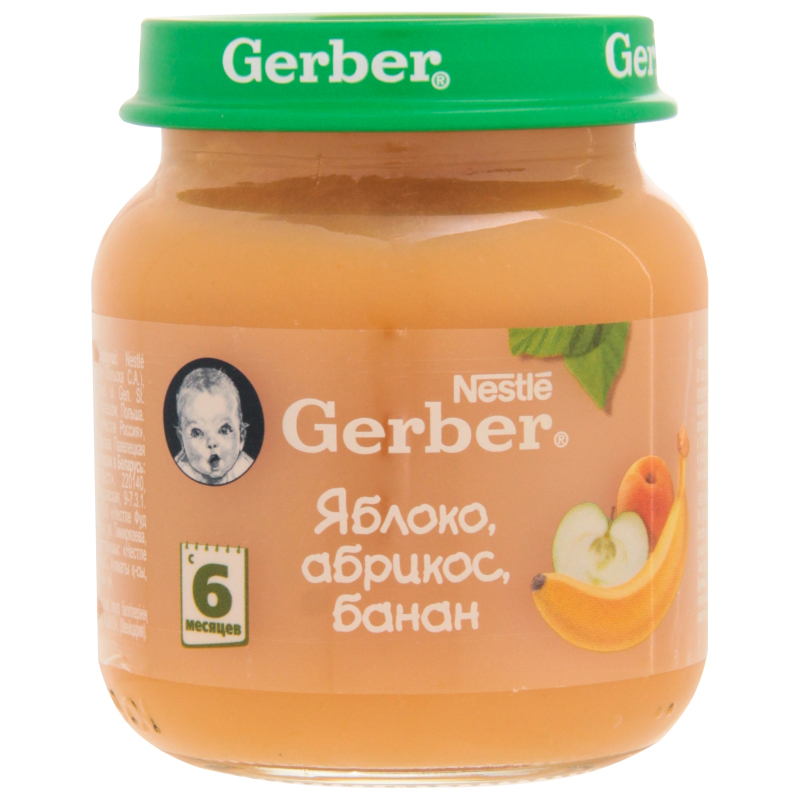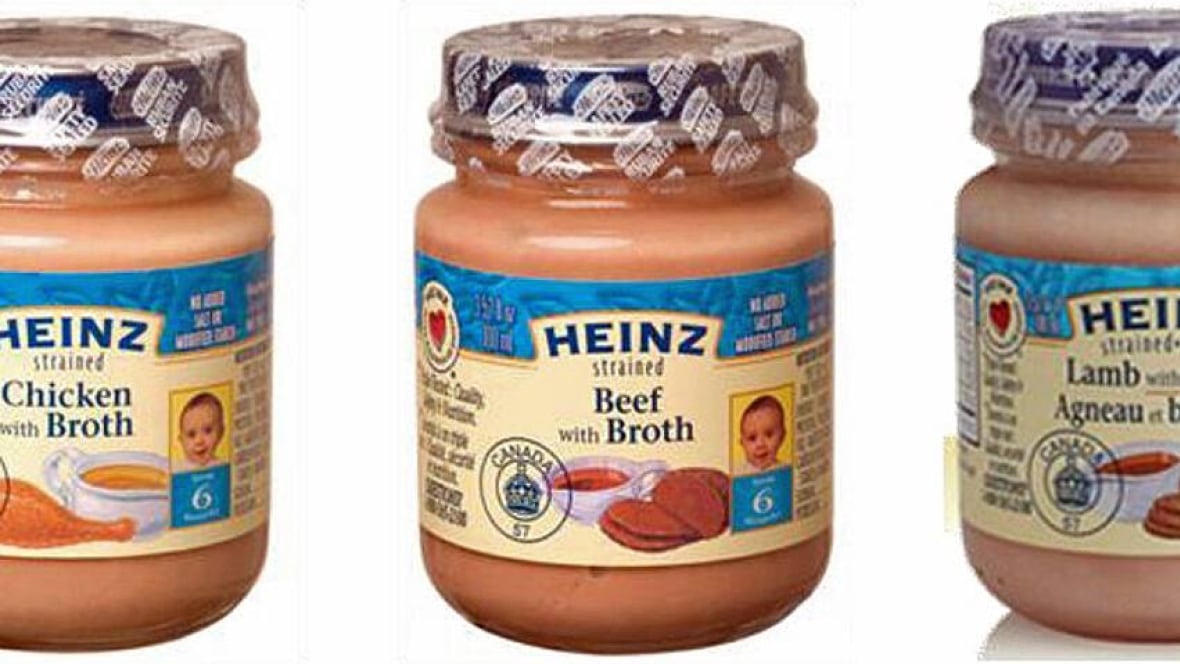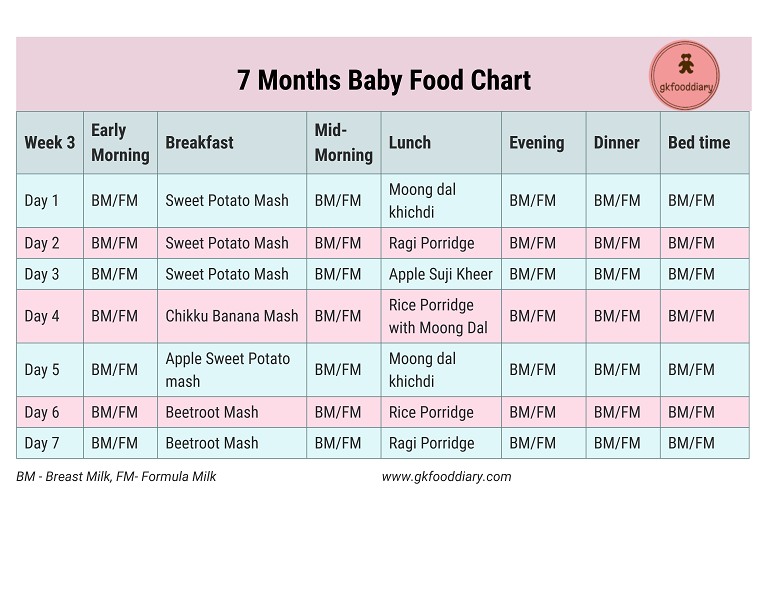Cauliflower baby food combinations
6x Cauliflower Baby Food | Tasty Recipes & Combinations
To keep our babies happy and loving us, the upkeep of good nutrition becomes important and the use of cauliflower as an ingredient can be a winner. The ingredient cauliflower comprises high levels of phytochemical according to researchers and can prevent our humans from becoming cancer patients.
In this article, we talk about introducing cauliflower to your baby’s diet and we name 6 recipes for tasty homemade baby food!
The recipes in this article:
Recipe 1 – Cauliflower, Broccoli, and Spinach
Recipe 2 – Cauliflower, Sweet potato, and Carrots
Recipe 3 – Cauliflower and Peach
Recipe 4 – Cauliflower, Salmon, and Rice
Recipe 5 – Cauliflower, Chicken, and Butternut squash
Recipe 6 – Cauliflower, Minced beef, and Peas
Recipe 7 – Cauliflower, kale and avocado
You might also be interested in our recipes with broccoli, sweet potato or butternut squash.
When can a baby eat cauliflower?
Cauliflower is best given to babies from age 8-10 months old because it may cause gas and it may also be difficult for a young infant to digest. You can try to introduce cauliflower before 8 months, but if your baby has issues digesting this food wait until your baby is a little bit older.
We recommend that you consult with your baby’s pediatrician on introducing solid foods as generalities may not apply to your infant.
How to prepare cauliflower for baby food
Clean the cauliflower under cold, running water and remove excess dirt. Remove the leaves and cut the cauliflower into small florets.
The best approach when preparing cauliflower for babies would be to steam the florets of the vegetable, this will keep the food soft. Steam for 8-10 minutes.
Other options include the use of a slow cooker (5-6 hours) or a crock-pot (5-6 hours), as long as the process allows for soft food but can still keep the nutrients.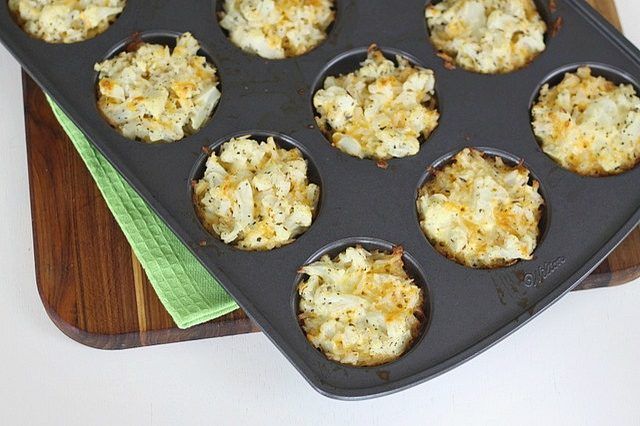
If you want to store and freeze these recipes, simply pour the puree into small kitchen containers or an ice cube form. Because the portions are very small, they will quickly defrost.
Recipe 1: Cauliflower, broccoli, and spinach (10-12 months+)
Read the print version
Creative parents can use the following homemade recipe to keep the fun in baby food and take part in looking after their young ones.
Ingredients:
- 4-5 Broccoli florets
- 2 handfuls of spinach
- 4-5 of cauliflower florets
- 500ml of water
Instructions:
Step 1 – Clean the broccoli and the cauliflower and cut off 4-5 florets of each vegetable.
Step 2 – Clean the spinach.
Step 3 – Cook the broccoli and cauliflower until tender, for about 15 minutes.
Step 4 – Steam the spinach for about 5 minutes.
Step 5 – Place steamed vegetables in a blender and add some water.
Step 6 – Pour the contents into ice cubes to cool down, cover the contents, close, and freeze.
Remove from the fridge the previous evening before use.
Recipe 2: Cauliflower, sweet potato and carrots (age 8-10 months+)
Read the print version.
A perfect homemade dinner recipe for your little one.
Ingredients:
- 4-5 cauliflower florets
- 1 sweet potato
- 2 medium-sized carrots
Instructions:
Step 1 – Rinse the vegetables and dry them.
Step 2 – Cut off 4-5 cauliflower florets.
Step 3 – Bring water to a boil using a medium saucepan. Reduce heat and cook the cauliflower until soft; it normally takes 15 minutes.
Step 4 – Peel and chop up the sweet potato and carrots. Cook the sweet potato for 20-30 minutes and the carrots for 15-20 minutes.
Step 5 – Add all the ingredients to a blender.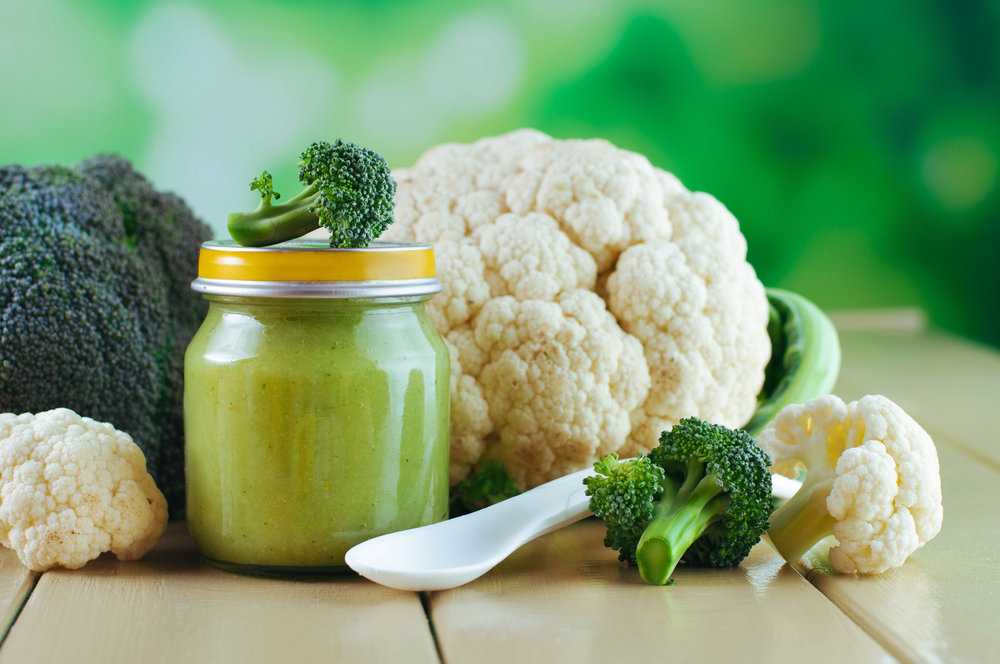 You can add some water to thin the puree.
You can add some water to thin the puree.
Step 6 – Pour the contents into ice cubes to cool down, cover the contents, close and freeze.
Remove from the fridge the previous evening before use.
Recipe 3: Cauliflower and peach (age 8-10 months+)
Read the print version.
A tasty and sweet recipe that your baby will love!
Ingredients:
- 1 Cup of cauliflower florets
- 1 Peach
- 1 Teaspoon of freshly grated ginger
Instructions:
Step 1 – Wash the cauliflower and cut off 4-5 florets.
Step 2 – Add cauliflower to a steamer and steam for seven minutes.
Step 3 – Peel and chop the peach and remove the core. Add them to a steamer for 3 minutes.
Step 4 – Cooldown the contents.
Step 5 – Place the cauliflower and peaches into a blender and add the teaspoon of ginger.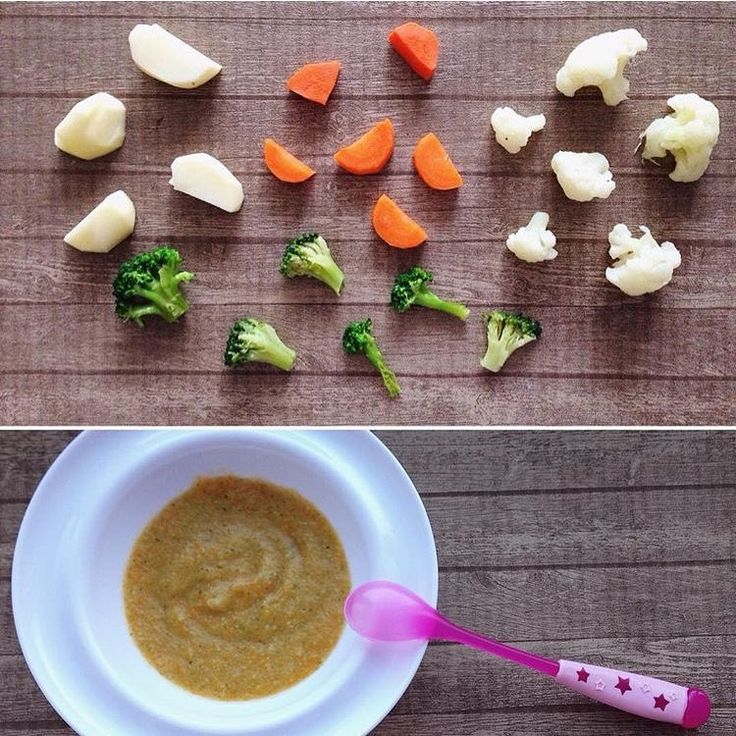
Step 6 – Blend for 2 minutes and add more water as required.
Recipe 4: Cauliflower, salmon, and rice (8-10 months+)
Another tasty and healthy dinner recipe for your little one.
Ingredients:
- 4-5 cauliflower florets
- 2 oz of salmon (50 grams)
- 1.1 oz of rice (30 grams)
Instructions:
Step 1 – Clean the cauliflower and cut off 4-5 florets.
Step 2 – Add the cauliflower to a steamer and steam for 7 minutes until the cauliflower is tender.
Step 3 – Preheat the oven to 400°F. Cover the baking dish with aluminum foil and place the salmon in the preheated oven. Bake the fish for 15 minutes, or until the flesh flakes easily with a fork.
Step 4 – Bring a saucepan with a small amount of water to a boil. Add the rice and boil it for 16-18 minutes. Pour the water off and let the rice cool down.
Step 5 – Put the cauliflower, salmon, and rice in a blender or food processor and blend into a nice puree.
Recipe 5: Cauliflower, chicken and butternut squash (8-10 months+)
Read the print file.
A healthy recipe with a sweet flavor.
Ingredients:
- 4-5 cauliflower florets
- 2 oz of chicken (50 grams)
- ¼ Butternut squash
Instructions:
Step 1 – Clean the cauliflower and cut off 4-5 florets.
Step 2 – Add cauliflower to a steamer and steam for about 7 minutes or use a slow cooker (5-6 hours) or a crock-pot (5-6 hours).
Step 3 – Make sure the chicken is skinless, boneless and all the muscles etcetera are removed.
Step 4 – Cook the chicken in a saucepan with boiling water for about 10 minutes. Make sure there is no pink spot left. A white foam might form on top of the boiling water, this is just protein and it is nothing to worry about.
Step 5 – Cut the butternut squash into two equal sections. Remove the seeds in the lower part.
Remove the seeds in the lower part.
Step 6 – Preheat your oven to 176 C. Place the two equal parts of your butternut squash on a baking tray.
Bake for at least one hour.
Step 7 – Then, scoop out any soft pulp from their skin.
Step 8 – Add all the ingredients to a blender or food processor to make a puree or cream. You can add water to thin the puree.
Recipe 6: Cauliflower, minced beef and green peas (age 8-10 months+)
Read the print version.
And last but not least, this delicious dinner recipe with minced beef and peas.
Ingredients:
- 4-5 cauliflower florets
- 2 oz of minced beef (50 grams)
- 1 handful of green peas
Instructions:
Step 1 – Wash the cauliflower and cut off 4-5 florets.
Step 2 – Add cauliflower to a steamer and steam for seven minutes or use a slow cooker (5-6 hours) or a crock-pot (5-6 hours).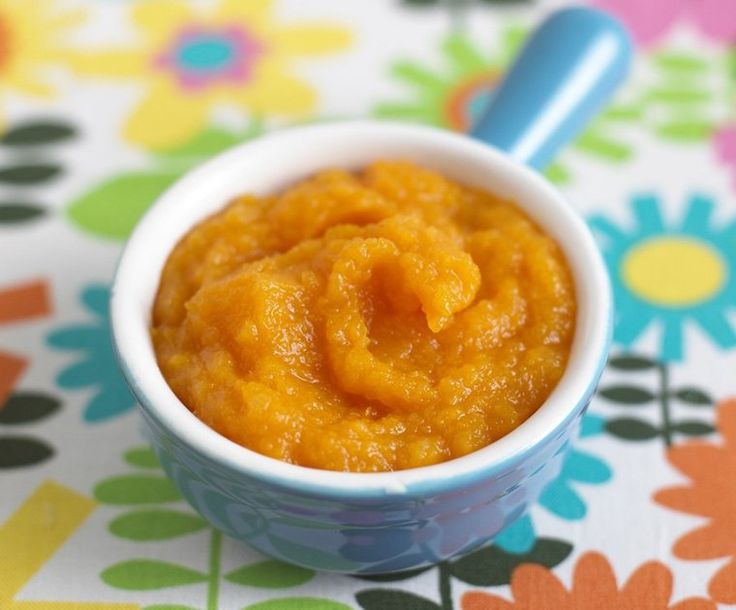
Step 3 – Place ground beef and about a ½ cup of water in a saucepan. Cook over medium-high heat until meat is cooked thoroughly and no longer pink (approximately 6 to 8 minutes). Ground meat should be cooked to an internal temperature of 160°F.
Step 4 – Cook the green peas for 5 minutes.
Step 5 – Put the peas, cauliflower, and beef into a blender and blend them into a powdery puree.
Recipe 7: Cauliflower, kale and avocado (age 8-10 months+)
Read the print version.
Ingredients:
- 4-5 cauliflower florets
- 2 handfuls of chopped kale
- 1 avocado
Instructions:
Step 1 – Clean the cauliflower and cut off 4-5 medium-sized florets.
Step 2 – Cook the cauliflower in a saucepan with boiling water for about 15 minutes. Or steam the cauliflower for 10 minutes.
Step 3 – Make sure the kale is cleaned and chopped.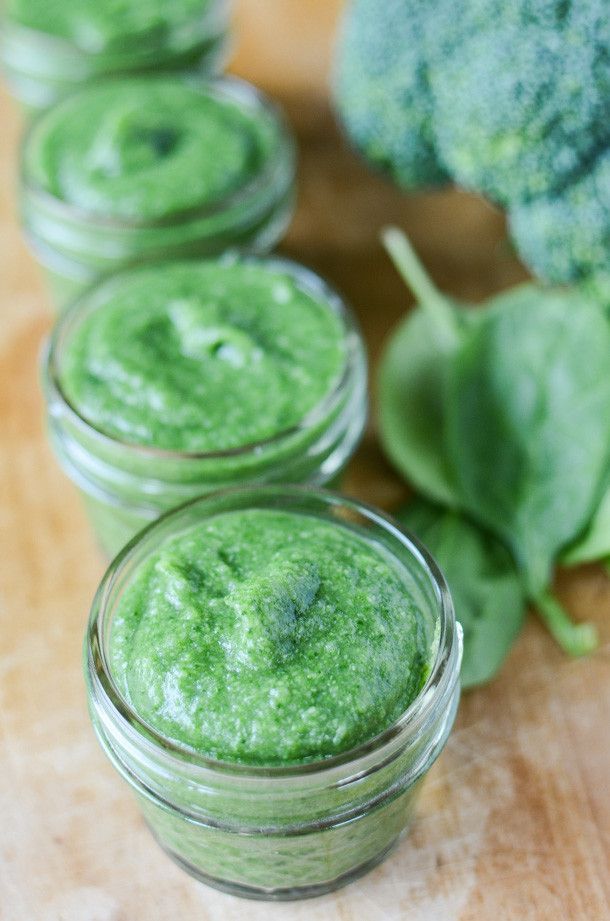 Cook it in a saucepan with boiling water for about 15 minutes. Or steam the kale for 5-7 minutes.
Cook it in a saucepan with boiling water for about 15 minutes. Or steam the kale for 5-7 minutes.
Step 4 – Cut the avocado’s in halves, remove the pit and scoop out the meat.
Step 5 – Add all the ingredients to a blender and add some water or formula.
Step 6 – Blend the ingredients into a smooth puree. Add a little more water or formula to make it thinner.
Feeding guide for cauliflower
8 months | 9-10 months | 11-12 months | |
| No. of tbs per portion | 1-2 | 2-3 | 2-3 |
No. of feedings per day | 2 | 2 | 2 |
Please keep in mind that this guide only applies to cauliflower.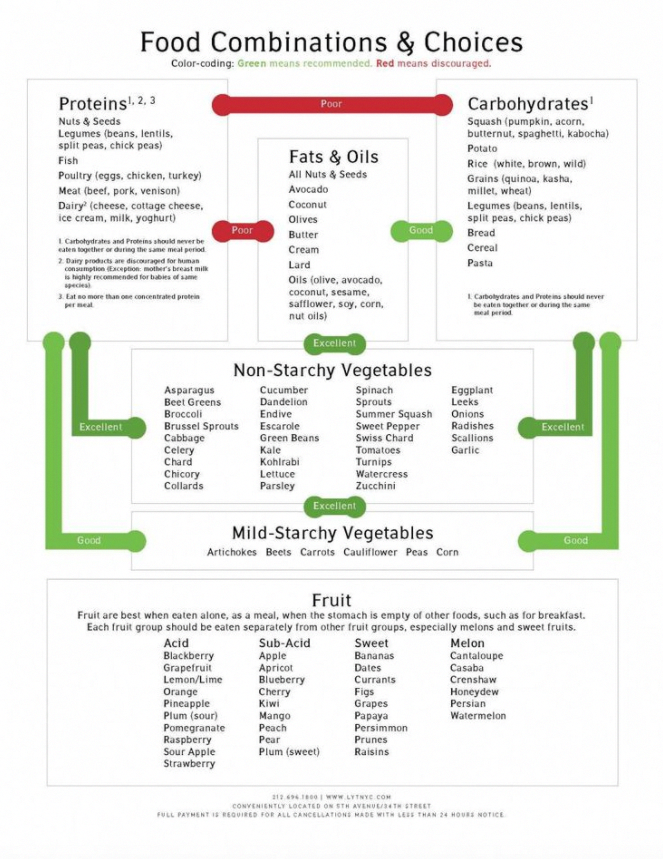 If you add other ingredients, like meats, the guide doesn’t apply anymore. We recommend that you consult with your baby’s pediatrician on introducing solid foods as generalities may not apply to your infant.
If you add other ingredients, like meats, the guide doesn’t apply anymore. We recommend that you consult with your baby’s pediatrician on introducing solid foods as generalities may not apply to your infant.
Are these baby food recipes freezable
You should store your batch of homemade baby food in a refrigerator using an airtight container for up to a period of 72 hours. You can freeze these baby food recipes into different portions by employing pouring the mixture into ice cubes or in small food storage containers.
Which kitchen tools to use
To prepare these baby food recipes, you will need the following kitchen tools:
- Blender or food processor
- Knife
- Tablespoon
- Cup
- Vegetable peeler
- Cutting board
- Saucepan
- Steamer pan, crockpot or slow cooker
- Food storage containers or an ice cube form
Nutritional Benefits
One cup of cauliflower can present high levels of vitamins A, C, calcium, and resolvable fiber.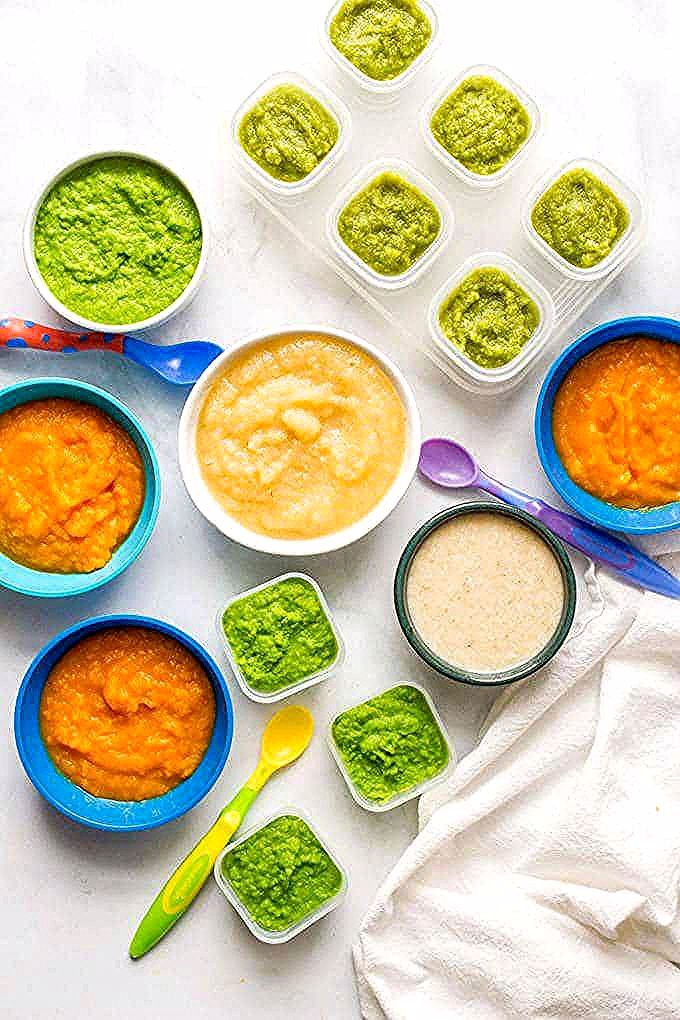 Babies can experience resolvable fiber as uncomfortable if the little one struggles with gas and the recommendation would be to use the ingredient only from six months onwards. Nutrition experts showed that the use of cauliflower may assist with babies who struggle with weight loss problems. Using the ingredient to prevent our babies from gaining weight can be the answer to a complex dietary problem.
Babies can experience resolvable fiber as uncomfortable if the little one struggles with gas and the recommendation would be to use the ingredient only from six months onwards. Nutrition experts showed that the use of cauliflower may assist with babies who struggle with weight loss problems. Using the ingredient to prevent our babies from gaining weight can be the answer to a complex dietary problem.
Keeping Cauliflower Fresh
Using fresh foods stays a risk if not properly stored and even more if our babies can become sick. Mothers or fathers must focus on the use of fresh cauliflower upon, especially when the ingredient forms part of regular baby food intake. The recommendation is to keep the cauliflower wrapped in an open bag for over 4 days maximum in the fridge. Keep the stem that will allow the vegetable to withhold its moisture.
How to pick the right cauliflower
Parents should purchase cauliflower with uttermost care and some characteristics to look out for includes visibility of dark green coloring, no mold, or bruised leaves.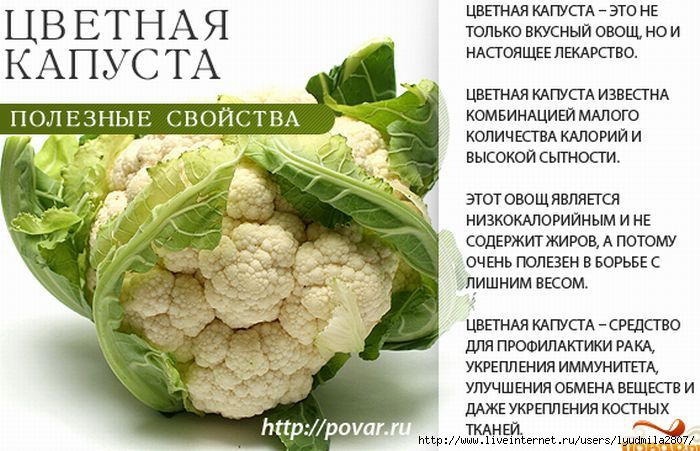 Many online fresh stop opportunities exist, but if not known to an internet shopping environment, traditional visits at the grocery store may be the better option to follow.
Many online fresh stop opportunities exist, but if not known to an internet shopping environment, traditional visits at the grocery store may be the better option to follow.
Cauliflower Baby Food Recipes and Introducing Cauliflower for Baby Food
When Baby Can Have Cauliflower & How to Prepare it for Baby
Did you know that the “flower” of the cauliflower is actually called a curd? It sounds odd because when I think of curds, I think of cottage cheese!
The Goodness of Cauliflower for Baby Food:
Cauliflower (like other cruciferous veggies such as broccoli and brussel sprouts) is packed full of phytochemicals which are said to help prevent cancer. Just one cup of cauliflower is packed with Vitamin A, Vitamin C and even calcium. Cauliflower is a great addition to a healthy diet but it causes many people to be a bit gassy.
Cauliflower (one cup – boiled)
| VITAMINS: Vitamin A – 15 IU Vitamin C – 54. Niacin – .5 mg Folate – 55 mcg Thiamine – .05 mg Pantothenic Acid – .6 mg Vitamin B6 – .21 mg Lutein – 36 mcg
| MINERALS Potassium – 176 mg Sodium – 19 mg Calcium – 20 mg Phosphorus – 40 mg Magnesium – 11 mg Iron – .40 mg Also contains small amounts of selenium, manganese, copper and zinc. |
Age for Introducing Cauliflower to Baby: 6-8 or 8-10 months
As with broccoli, cauliflower is not a good choice for one of Baby’s first vegetables. It may cause gas and may also be a bit difficult for a young infant to digest. Cauliflower is best given to babies between 8-10 months old but you could try to introduce it earlier. If your baby has had any digestive issues, it would be best to introduce cauliflower into the diet later rather than sooner.
As always, we recommend that you consult with your baby’s pediatrician on introducing solid foods as generalities may not apply to your infant.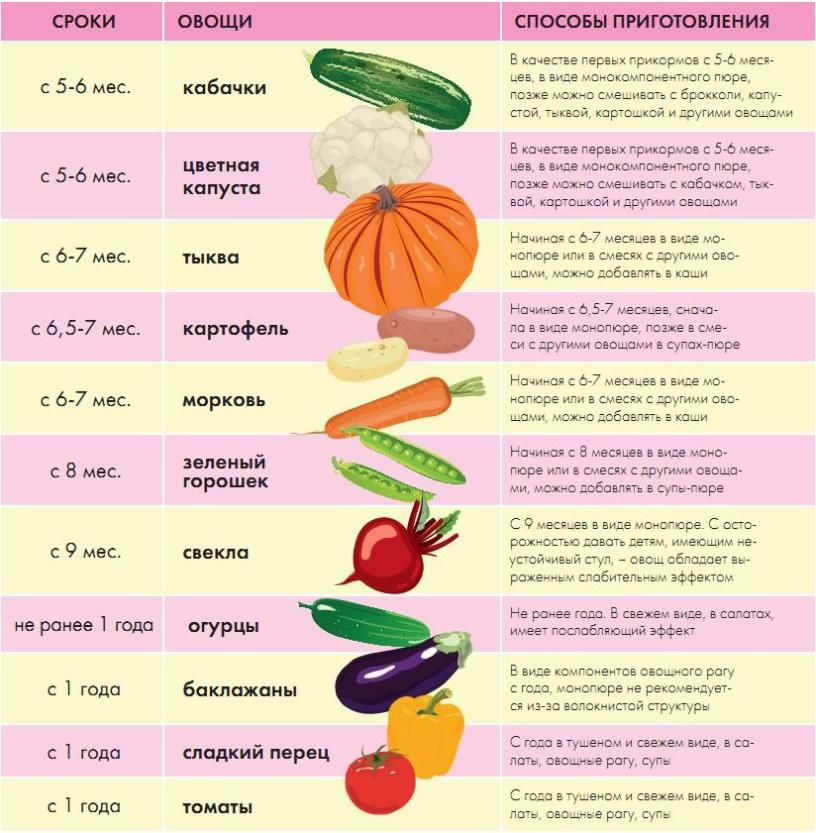
How to select and store the perfect cauliflower for homemade baby food
According to the EWG, cauliflower is not one of the “dirty dozen” foods that are most highly contaminated with pesticides – purchasing organic is a personal choice.
The size of the cauliflower does not affect the taste and buying the largest or the smallest will get you the best tasting cauliflower. The most important thing to lookl for when buying cauliflower is a cauliflower that is almost completely wrapped in its green leaves. The leaves protect the tender curd from bruising and mold and the more leaves, the more protection.
Store cauliflower in a plastic bag in the refrigerator with the stem portion down. The stem portion in the downward position will help keep moisture from pooling on the curd.
Freezing pureed cauliflower
Cauliflower puree may be frozen just like you would freeze other foods you make for your little one. The cauliflower puree may be a bit watery when it is thawed.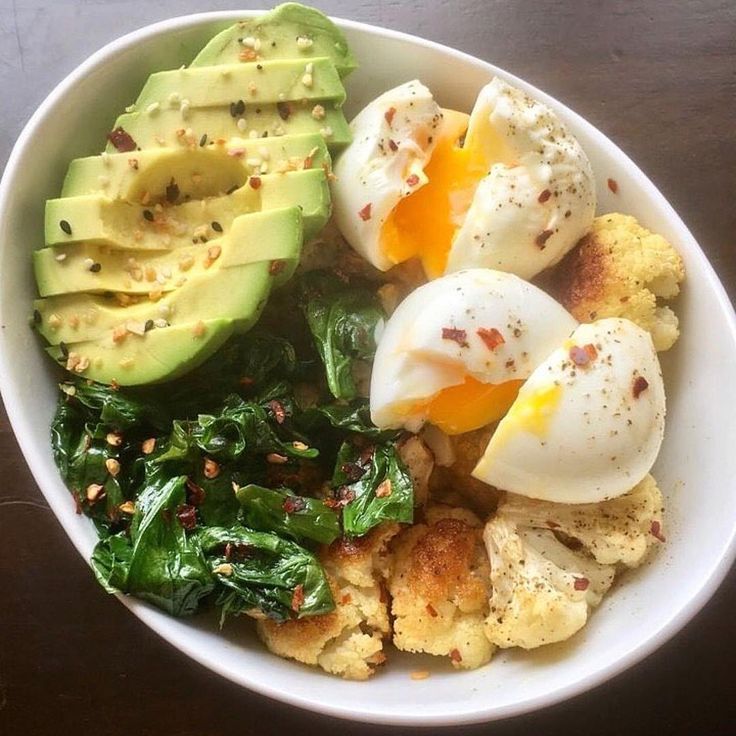
Best Way to Cook Cauliflower for Baby Food
When cooking cauliflower you should always steam it to retain the most of its nutrients. Baking or roasting cauliflower is another option. Roasted cauliflower is nice but seldom is cauliflower baked by itself without being a part of a recipe.
Please be sure not to over steam cauliflower or you will find a mushy and bitter tasting veggie.
A Few Yummy Cauliflower Baby Food Recipes
Cauliflower – Basic Purée
Ingredients:
1 Cauliflower
Directions:
Step 1: Wash cauliflower under cool water.
Step 2: Peel away the green leaves to get to the curd
Step 3: Chop the curd (flower) into small pieces; using just the florets if possible. This will give you a smoother and better tasting puree. Steam until tender.
Step 4: Place into your choice of appliance for pureeing and begin pureeing.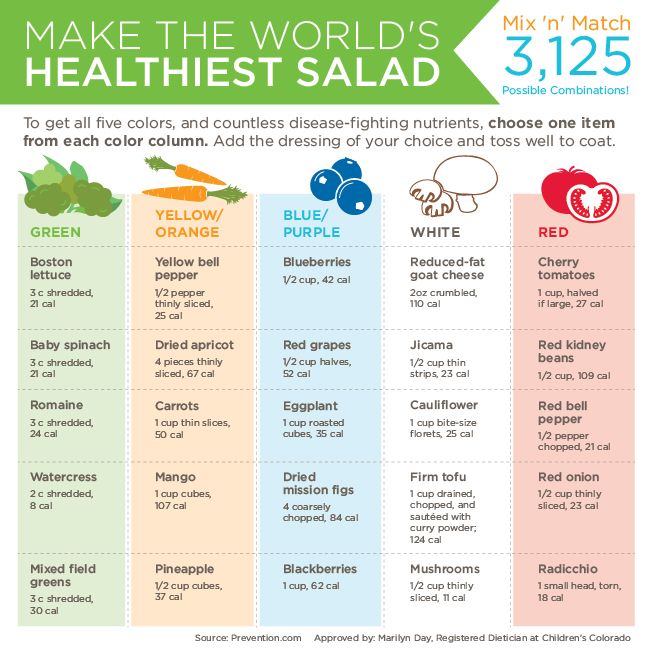
Step 5: Add water as necessary to achieve a smooth, thin consistency.
Cauliflower, Apple & Zucchini
Ingredients:
- 1 small cauliflower
- 1 cored and peeled apple
- 1 small zucchini – chopped
Directions:
Step 1: Wash cauliflower under cool water.
Step 2: Peel away the green leaves to get to the curd and chop into small pieces – Steam until tender.
Step 3: Steam until tender – 1 peeled and cored apple with 1 chopped zucchini
Step 4: Place cauliflower, apple and zucchini into your choice of appliance for pureeing and begin pureeing. Chop or dice for finger food
Step 5: Add water as necessary to achieve a smooth, thin consistency – you will probably not need to add water as these foods are watery as it is.
If you wish to steam all 3 foods together, then steam the cauliflower separately for approximately 15 minutes then add the apple and zucchini. Cauliflower takes a longer time to cook than apples and zucchini.
Cauliflower takes a longer time to cook than apples and zucchini.
Cauliflower Bake (8 months+ due to cheese unless dairy is ok)
Cauliflower is wonderful when baked with cheese and a sprinkle of breadcrumbs! This makes a wonderful finger food for self-feeders.
Ingredients:
- 1 large white cauliflower
- 2 tbs butter
- 4 green onions, finely chopped
- 2 tbs flour
- 1 cup milk
- 1/2 teaspoon garlic powder
- 1/4 teaspoon pepper
- 1/4 teaspoon basil
- 1/4 cup seasoned bread crumbs
- 2 Tablespoons grated Parmesan
Directions:
Step 1: Cook cauliflower whole in boiling water about 20 minutes.
Step 2: Drain and place in baking dish.
In a small skillet, melt butter and saute green onions over medium-low heat for 5 minutes.
Step 3: Blend in flour and cook for another 3 minutes over low heat – you’re making a roux.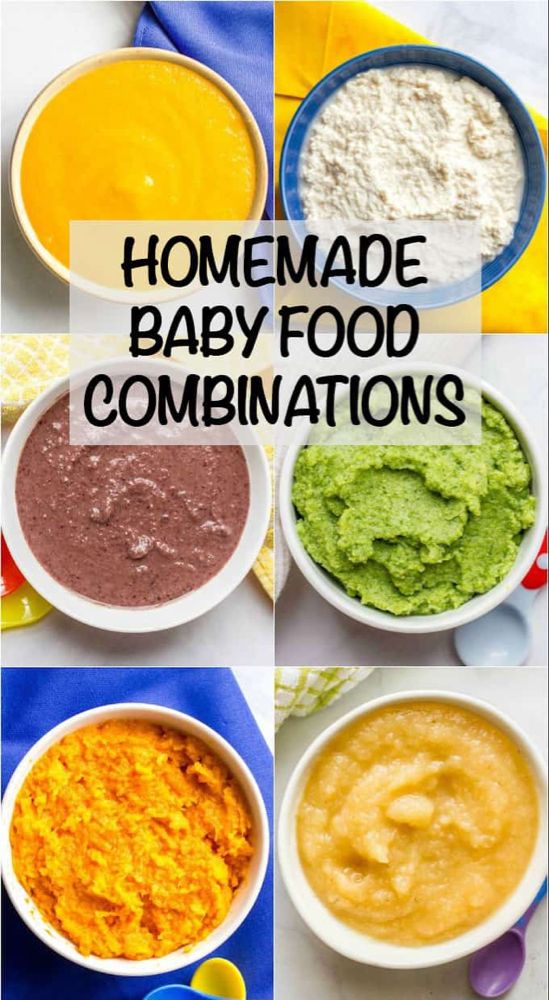 Slowly stir in the milk and simmer until the mixture is smooth and thick, stirring constantly.
Slowly stir in the milk and simmer until the mixture is smooth and thick, stirring constantly.
Step 4: Add the garlic, pepper, and basil. You may increase the spices as you desire, we enjoy more garlic and even chopped garlic.
Step 5: Pour the sauce over the cauliflower. Sprinkle with the bread crumbs and cheese.
Step 6: Bake at 375 F for about 20 minutes or until slightly browned.
Cauliflower Soup – Creamy or Not
Ingredients:
- 6 cups of chicken stock (low sodium all natural or homemade preferred)
- 1 large head of cauliflower
- 2 carrots
- 1/2 cup diced onions
- 2 tablespoons butter
- 1 clove garlic, crushed (or 2 tablespoons minced garlic)
- pinch nutmeg
- pinch of cinnamon
- pinch of freshly ground black pepper
- pinch of salt
Directions:
Step 1: Dice the carrots. Remove the leaves from the cauliflower and then cut the curds away from the stem. Dice the curds.
Remove the leaves from the cauliflower and then cut the curds away from the stem. Dice the curds.
Step 2: Use a large stock pot and melt the butter over medium heat. Add the garlic and the onions and saute until translucent. Add the spices, stir then pour in the broth.
Step 3: Add the cauliflower and bring to a gentle boil. Reduce the temperature, cover the pot and simmer for approx. 30 minutes until the cauliflower and carrots are fork tender. Stir occasionally.
Step 4: Allow soup to cool for 10 minutes then puree to a consistency you like. Some prefer an entirely smooth soup while others enjoy some bits of veggies. You can use a blender, food processor or use an immersion blender straight in the pot. If you want to make this creamy, replace 2 cups of water with milk. Enjoy!
Foods Good to Mix With Cauliflower:
- Apples
- Broccoli
- Green Beans
- Dried Beans
- White Potato
- Peas
- Summer Squash – zucchini or yellow/crooked necked
- Brown Rice
- Lentils
- Chicken
- Beef
- Pork
Remember, always consult with your pediatrician regarding introducing solid foods to your baby and specifically discuss any foods that may pose allergy risks for your baby.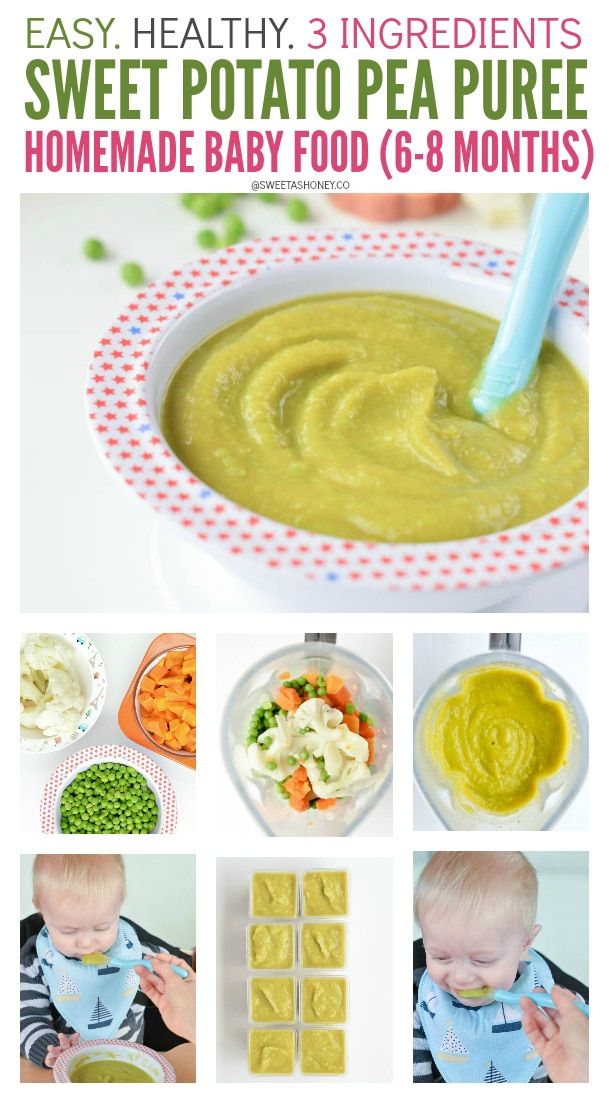
This site complies with the HONcode standard for trustworthy health information:
verify here.
SHARE ON FACEBOOK SHARE ON PINTEREST
Cauliflower - Encyclopedia Baby food
Viktoriya Levchuk©Approximately at 6-7 months you can introduce cauliflower into your baby's diet. This vegetable contains vitamins C and K and belongs to slightly allergenic foods, which is why it is so useful for baby food.
Cauliflower (like other cruciferous vegetables such as broccoli and Brussels sprouts) is loaded with various phytochemicals that are said to help prevent cancer. Just one cup of cauliflower contains vitamin A, vitamin C, and even calcium. Cauliflower is a great addition to a healthy diet.
Like broccoli, cauliflower is on the one hand not a good choice for a baby's first food. Since its use can lead to gas formation, and it will also be a little difficult for the baby to digest it. Cauliflower is best given to infants between 8-10 months of age, but can be introduced earlier.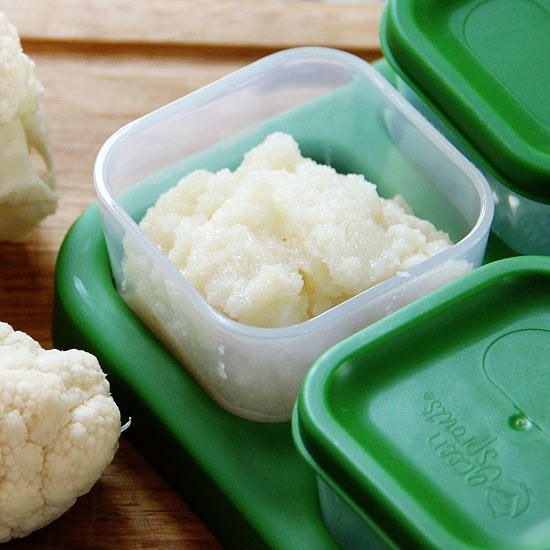 If the child has any digestive problems, it is best to introduce cauliflower into the baby's diet later than before. However, not everything is so bad, an allergic reaction to cauliflower is extremely rare, it is easier to digest and less gas formation than other types of cabbage. The main thing to remember is that cauliflower has anti-inflammatory properties, helps to eliminate toxins, has a positive effect on blood vessels, intestinal microflora, the baby's nervous system, etc.
If the child has any digestive problems, it is best to introduce cauliflower into the baby's diet later than before. However, not everything is so bad, an allergic reaction to cauliflower is extremely rare, it is easier to digest and less gas formation than other types of cabbage. The main thing to remember is that cauliflower has anti-inflammatory properties, helps to eliminate toxins, has a positive effect on blood vessels, intestinal microflora, the baby's nervous system, etc.
As always, we recommend that you consult your child's pediatrician before introducing solid foods.
The size of the cauliflower does not affect the taste and buying the largest or smallest is not so important. The most important thing is that the cabbage is completely wrapped in green leaves, without brown spots, the flowers themselves are not sluggish and loose.
Store cauliflower stem side down in a plastic bag in the refrigerator. Cauliflower should not be washed before storage. Importantly, this type of cabbage belongs to perishable products, so we store it for no more than 4-7 days, and it is best to use it immediately after purchase.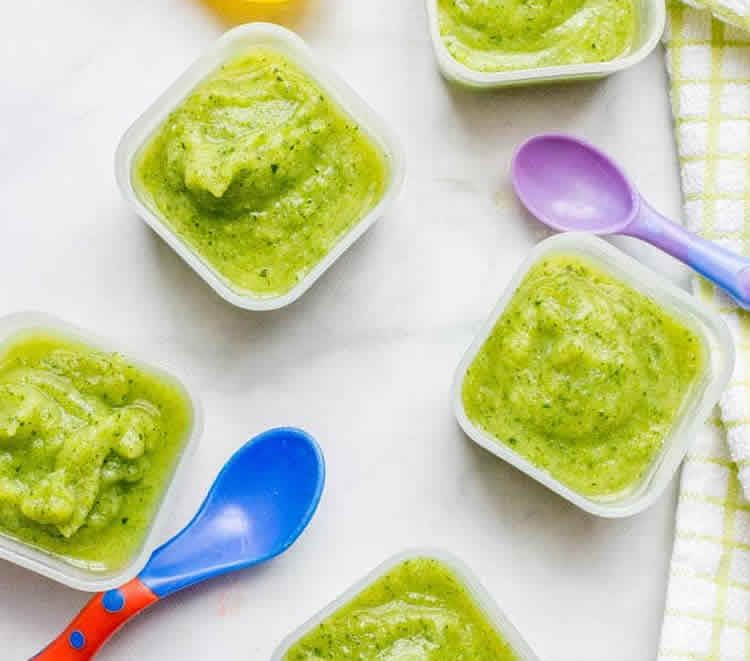
Cauliflower is excellent for freezing. There are 2 types of freezing:
- Fresh cauliflower is divided into inflorescences, washed, dried and frozen with quick freezing, then put in a bag.
- Fresh cauliflower is also divided into florets, washed, blanched for 3 minutes, dried and frozen in a quick freeze, then put in a bag.
The last method is more acceptable, since the taste of cabbage almost does not change, and with the first method of freezing, the taste changes significantly, so most mothers choose cauliflower blanching.
However, if cauliflower is harvested for the winter for future complementary foods or for a one-year-old baby, then it is best to increase the blanching time three times, and thoroughly wash the pan in which the cabbage will be stored, and it is better to pour boiling water over it. And before blanching, soak the cabbage in salted water for 20 minutes so that all insects have time to escape.
Frozen cauliflower will keep for about 9 months. The main thing is not to forget to write down the date of freezing on the package.
The main thing is not to forget to write down the date of freezing on the package.
Cauliflower puree can also be frozen for baby in an ice tray, then transferred to a regular bag for longer storage. Cauliflower puree may be slightly watery when it thaws.
When cooking cauliflower, it is best to use a steamer, slow cooker or pressure cooker to preserve all the nutrients, i.e. cook it for a couple. Baking or frying is another cooking option. Roasted cauliflower is already a separate dish, rarely baked cauliflower, by itself, without being part of the recipe.
There is no official dosage of cauliflower consumption per week by a child, therefore, after introducing the product into the diet to the prescribed norm, it can be given three times a week in the form of soup, steamed mashed potatoes. This product is great as a finger food, for the development of hand motor skills and chewing reflex. The main thing is to monitor the condition of the baby, whether the stomach hurts, whether there is swelling after eating, etc.
Contents:
Cauliflower must be thoroughly washed, green leaves removed and divided into inflorescences. Sometimes it is pre-soaked in salted water to get rid of bugs and nitrates.
Usually cabbage florets are dipped in boiling water and boiled for about 5-7 minutes, until tender. However, you can use a slow cooker, a pressure cooker, and a double boiler.
After the cauliflower is cooked, leave a little vegetable broth (if the vegetable is from your own garden), and pass the cabbage itself through a press or beat with a blender. Add vegetable broth until the desired consistency is obtained. Vegetable broth can be replaced with breast milk, milk formula or plain boiled water. In cauliflower puree, you can add a little sunflower oil, only if the oil is introduced into the baby's diet.
AnyutaN - Feb 14th, 2017
Categories: Puree
Tags: Freezing Cabbage, Cauliflower Puree
Cauliflower is an incredibly healthy thing.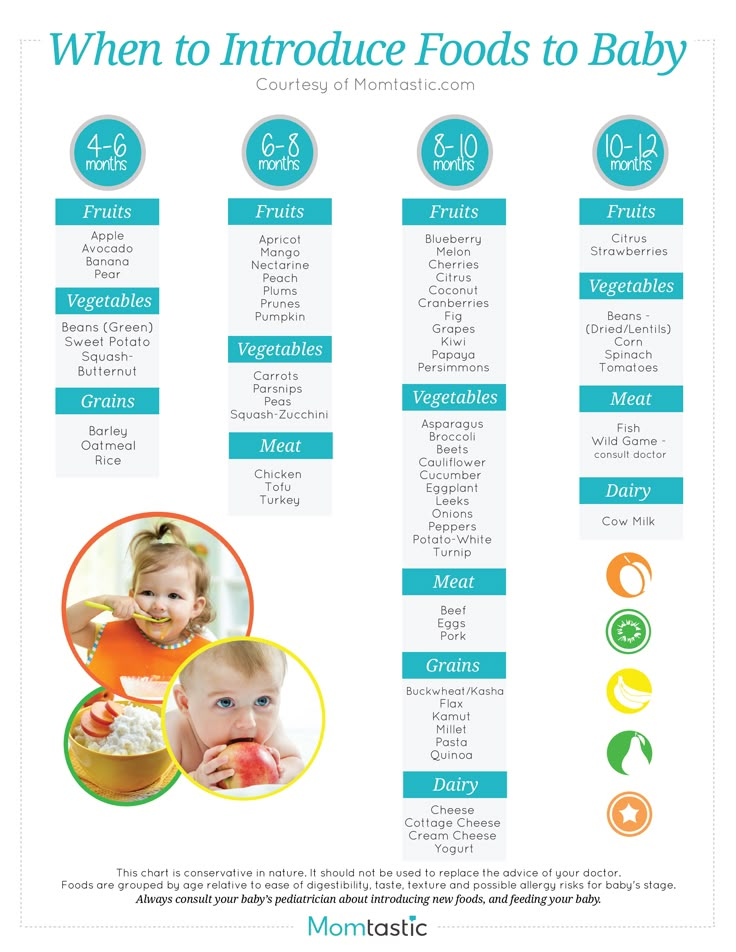 It contains a large number of vitamins and minerals that are indispensable for the body, both an adult and a child. In addition, this vegetable does not contain coarse fiber, so that, starting from 5 to 6 months, you can gradually treat the baby with cauliflower. In any form? Of course, in the frayed. Today we will talk about how to prepare cauliflower puree and prepare it for the winter.
It contains a large number of vitamins and minerals that are indispensable for the body, both an adult and a child. In addition, this vegetable does not contain coarse fiber, so that, starting from 5 to 6 months, you can gradually treat the baby with cauliflower. In any form? Of course, in the frayed. Today we will talk about how to prepare cauliflower puree and prepare it for the winter.
Ingredients: oil, salt, cauliflower
Time to book: Summer, Autumn
Contents
- 1 Selection and preparation of cauliflower
- 2 Cooking methods for mashed cauliflower1 902 recipe 902 cabbage
- 4 Variety of mashed potatoes
- 5 Cauliflower puree for babies
- 6 Winter mashed potatoes
Selection and preparation of cauliflower
Puree can be made from fresh or frozen cabbage. Preference is undoubtedly given to the first option. This issue is not discussed at all if the dish is prepared for the baby.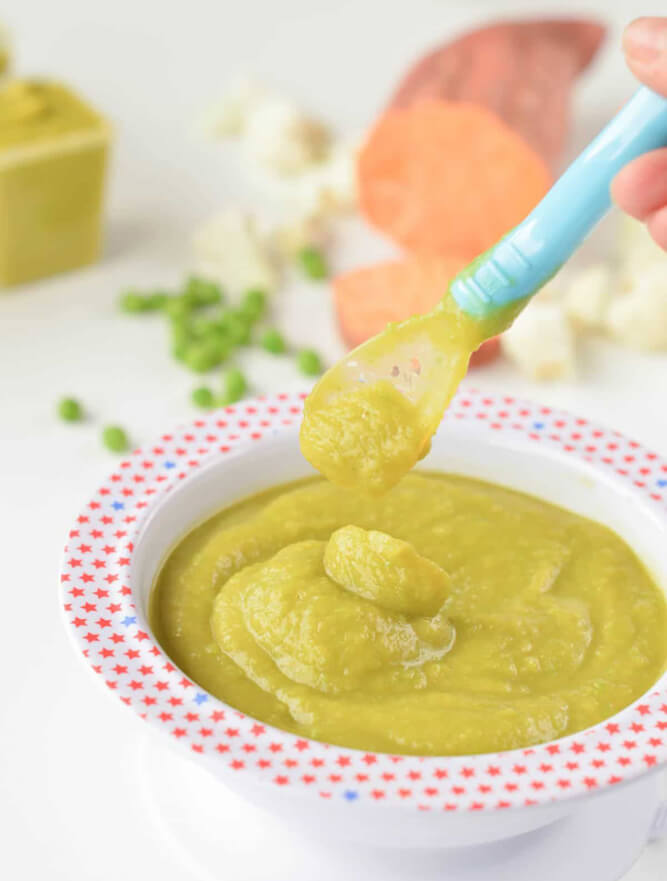
Consider the rules for choosing a head of cauliflower:
- the head must be dense and resilient;
- inflorescences should be located as close to each other as possible and have a light beige color;
- green leaf mass must fit snugly around the head;
- Any discoloration or damage is unacceptable.
Initially, the head of cabbage is disassembled into large inflorescences and washed under running water.
If mashed potatoes are prepared for babies, then large shoots must be additionally soaked in saline. To do this, dilute 2 tablespoons of sea or table salt in a liter of water. After dissolving the crystals, cabbage is lowered into the liquid for half an hour. This manipulation allows you to get rid of small insects that may have chosen a vegetable.
After soaking, large shoots are rinsed again and disassembled into small inflorescences. It's time to start processing vegetables.
Ways to boil cauliflower for puree
There are several ways to boil cauliflower until soft. Let's analyze each of them in detail:
Let's analyze each of them in detail:
- On the stove. Processed inflorescences are placed in boiling water and boiled for 15 - 20 minutes on medium heat. It is better to keep the lid tightly closed so that water-soluble vitamins do not evaporate.
- In a slow cooker. Cauliflower can be cooked on the "Extinguishing" mode by adding a small amount of water to the bowl. In this case, the cabbage processing time is 15 minutes. The multicooker lid must be closed. Another option is to use the "Steam" function and boil the vegetable in a special bowl for 20 minutes after the liquid boils.
- In a steamer. If you prefer to use a double boiler, then you also need to cook cauliflower inflorescences in it for 20 minutes.
- In the microwave. The inflorescences are placed in a container suitable for use in microwave ovens and water is added. For 1 kilogram of cauliflower, you need 100 grams of liquid. The top of the cup is loosely covered with a lid or plastic bag.
 Cook the vegetable at maximum power for 5 minutes. After the specified time, check the readiness of the cabbage. You can do this with a kitchen knife or fork. If the tools do not penetrate well, then continue cooking in the same mode for another 3 minutes.
Cook the vegetable at maximum power for 5 minutes. After the specified time, check the readiness of the cabbage. You can do this with a kitchen knife or fork. If the tools do not penetrate well, then continue cooking in the same mode for another 3 minutes. - In the oven. Cabbage is placed in a small baking sheet and, almost completely, is filled with water. Prepare the inflorescences in the oven for 25 minutes. The heating temperature should be 180 - 200 degrees.
Classic cauliflower puree recipe
- cabbage – 1 head, total weight about 1 kilogram;
- butter - 50 grams;
- water or cabbage broth - 200 milliliters;
- salt - 1 teaspoon.
Prepared cabbage is thermally processed until soft by any of the above methods. Fold half of the softened pieces into a blender bowl, add 100 milliliters of water and punch everything together until a homogeneous consistency. Then the second parts of the products, salt and oil are added.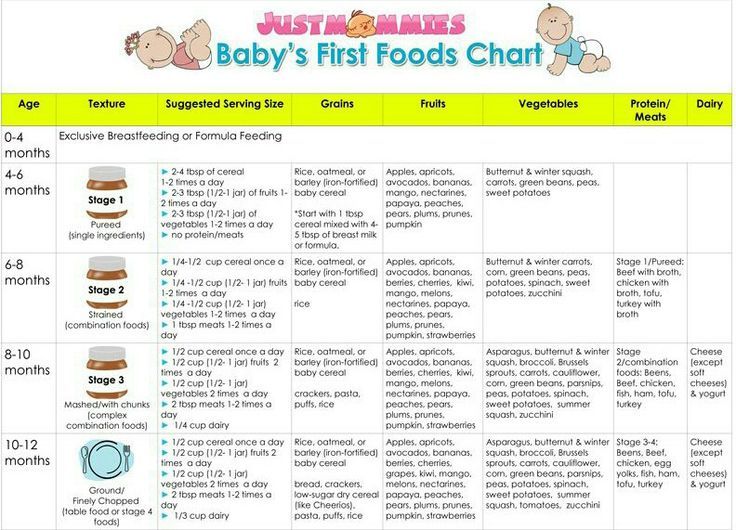 The procedure is repeated. Ready mashed cauliflower can be peppered with freshly ground pepper to taste.
The procedure is repeated. Ready mashed cauliflower can be peppered with freshly ground pepper to taste.
Channel “Video. Recipes. Culinary" presents to your attention the recipe for mashed cauliflower and zucchini
Variety of puree
Puree of other vegetables can be added to the cabbage base. It goes well with cauliflower: carrots, onions, broccoli, pumpkin, zucchini, garlic and potatoes. You can also add chicken yolk and sour cream to the puree.
Watch the video from the Video. Recipes. Cooking, detailing how to make puree of carrots, cabbage and potatoes
Baby cauliflower puree
Peculiarities of preparation of baby puree are as follows:
- Cabbage is thoroughly washed and soaked in salt solution;
- cabbage should be boiled in clean, preferably bottled water for baby food;
- no spices need to be added to the dish;
- the consistency of baby puree should be the same as kefir;
- puree can be diluted with pure water, cabbage broth or breast milk;
- olive oil is used, direct extraction.

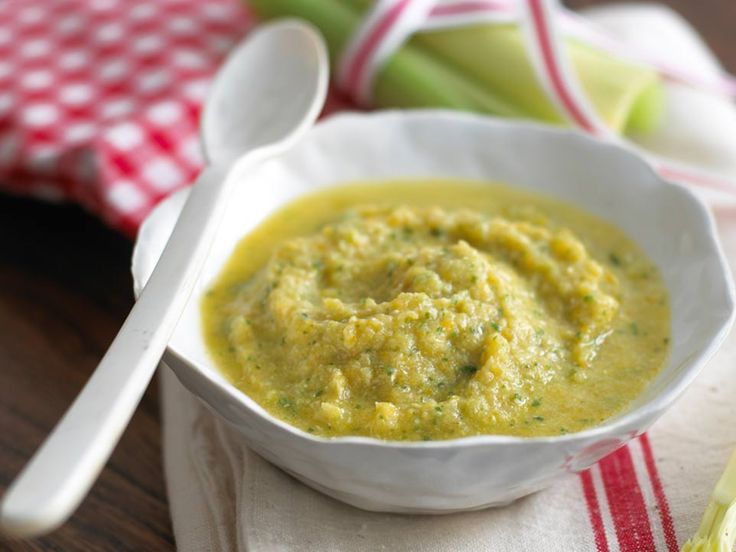 9 mg
9 mg